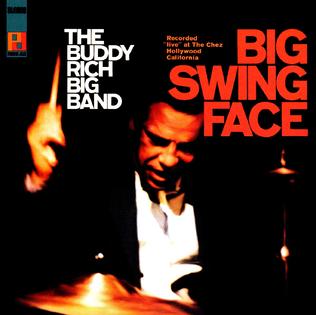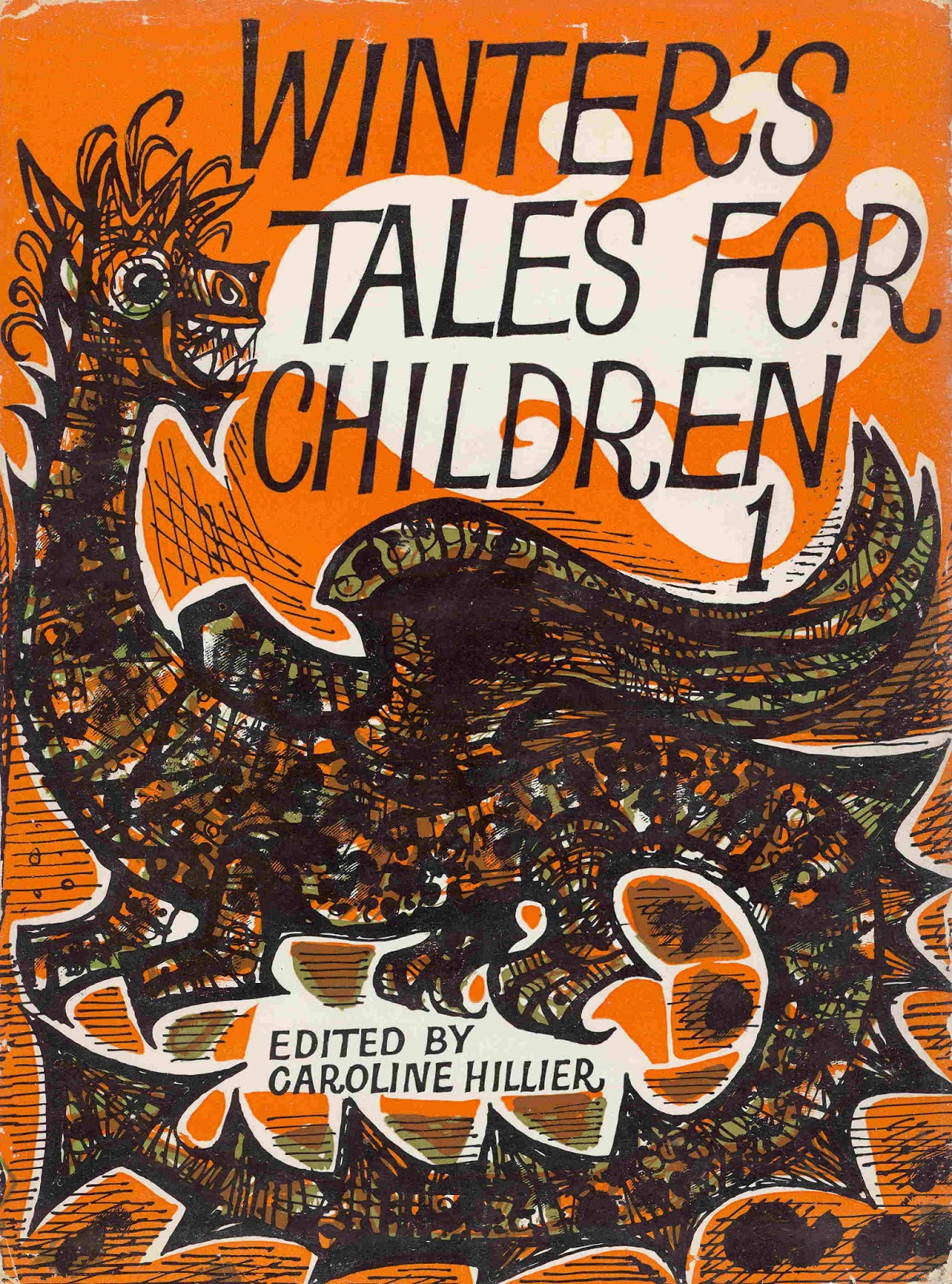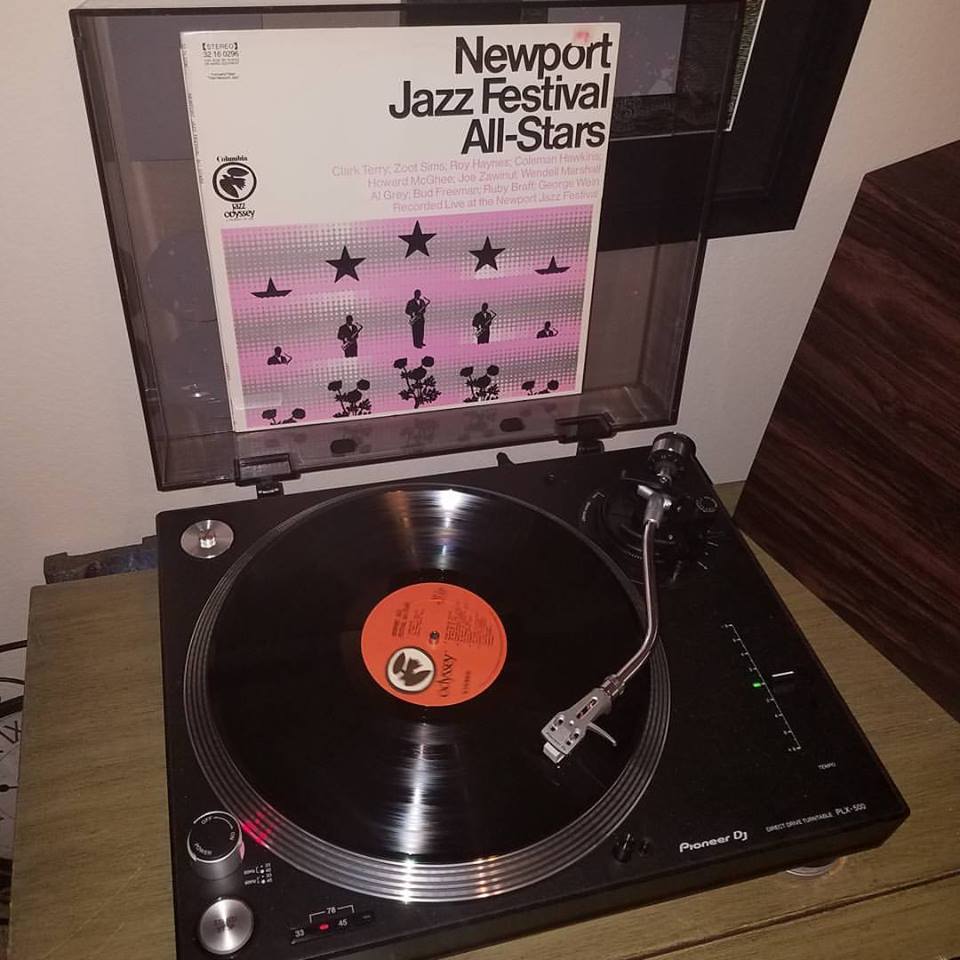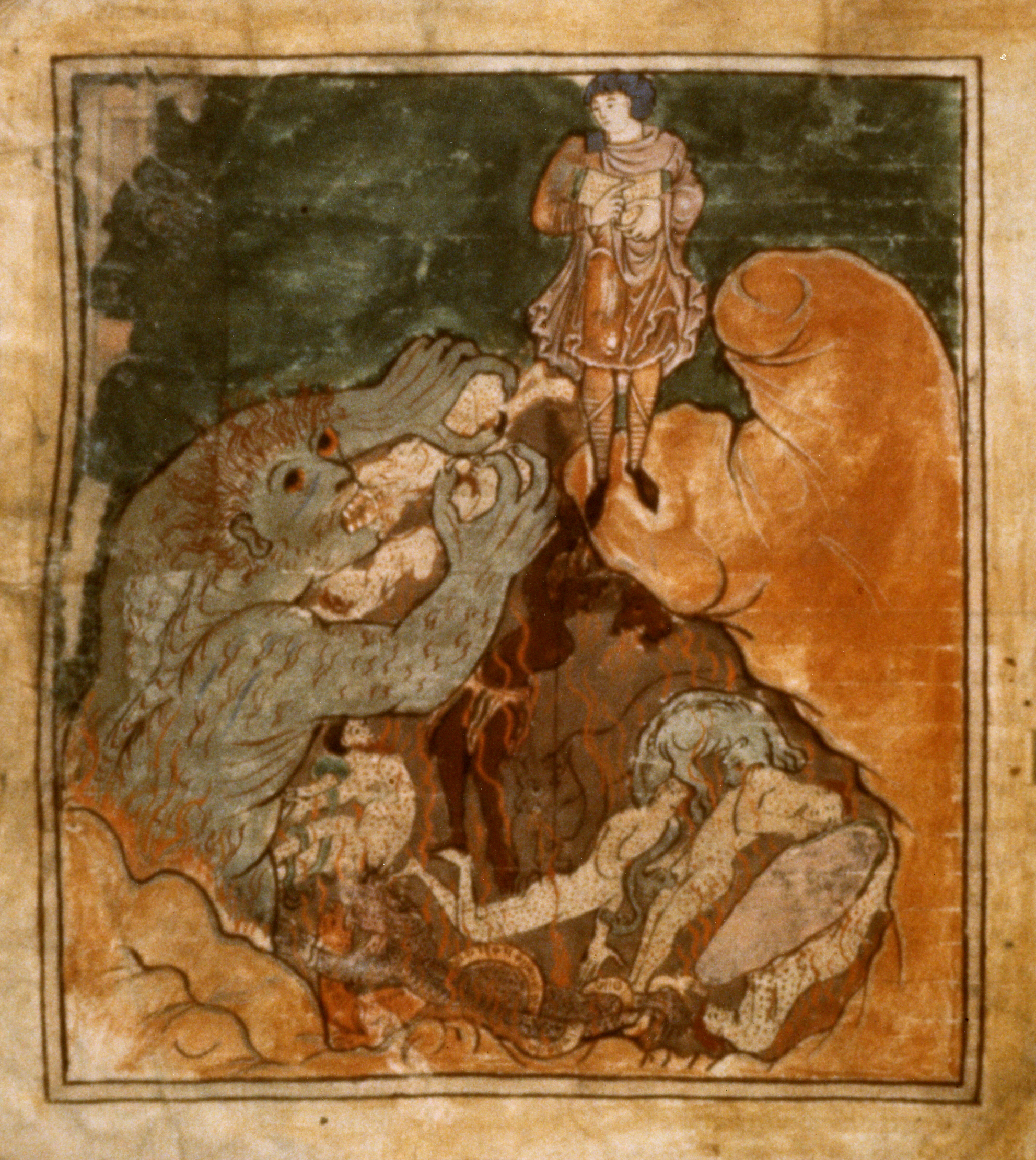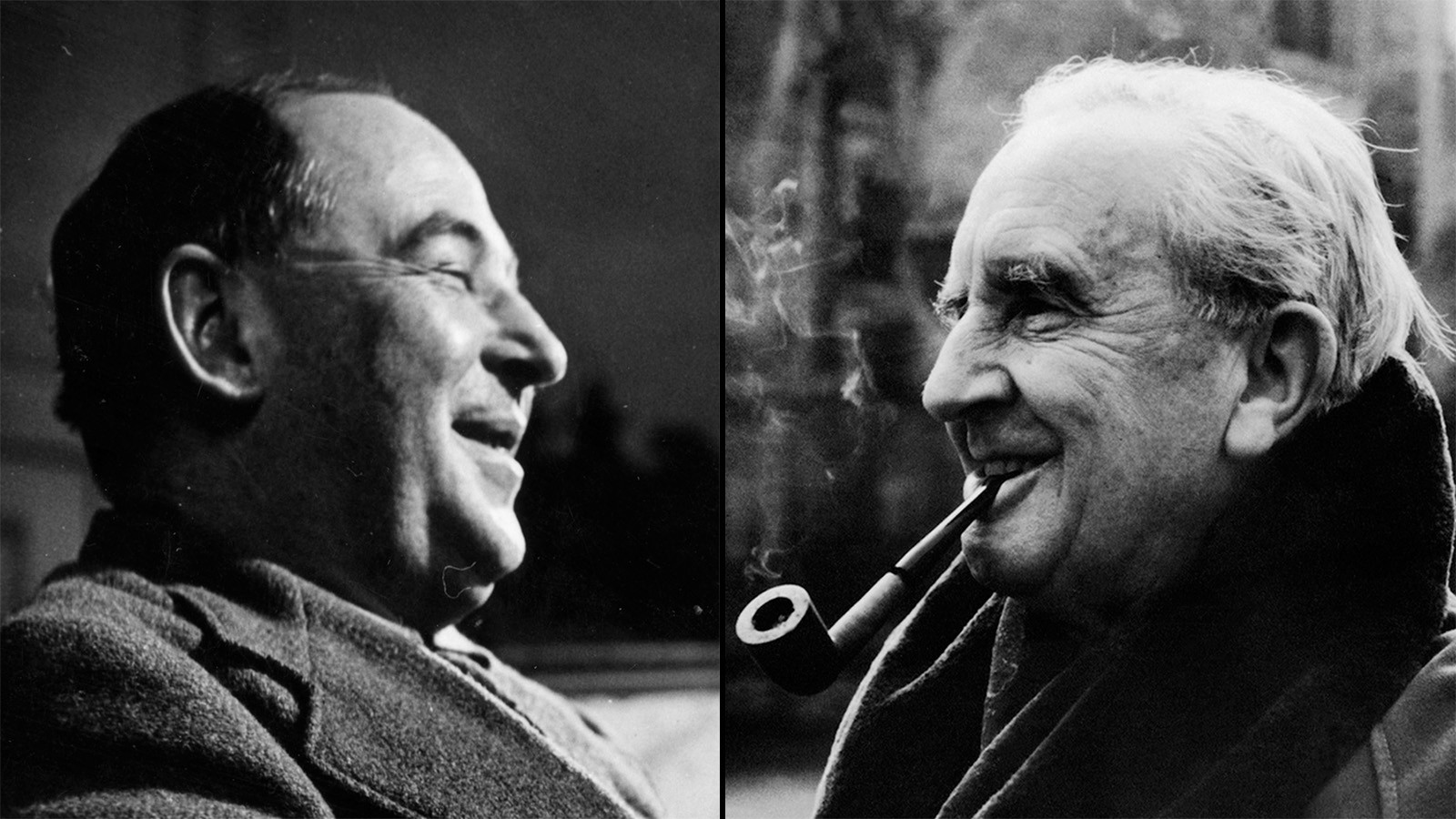I’m not going to pretend that I have anything to say about Buddy Rich that hasn’t been said by people that are much more talented and musically astute than I am. He’s easily in everyone’s list of top 10 drummers. I’ll just make some off the cuff comments. This is a fun album with a few songs that would have been modern in 1967. Norwegian Wood by the Beatles and The Beat Goes On by Sunny and Cher. The latter is performed on this album by Buddy’s daughter, Cathy, when she was 12. It’s a really fun performance. Overall the sonics are great. The engineering is wonderful. This is a very well recorded live album. Cathy’s singing and the drum solo in the final song (Bugle Call Rag) are worth the price of admission. 5/5
Grandpa Dodds
EDIT: Maybe it was the Redskins. I saw a picture of him recently with a Redskins sweatshirt so now I don’t know. Maybe he wasn’t a Chiefs fan. It was a football team that was red, and had to do with native Americans. I never was much into football.
I was asked to share some memories of my grandfather to be read at his memorial service. I’m posting them here so that they stay in my memory.
There are several memories that I could share but one thing they all have in common is Grandpa’s smile. I don’t think I can even imagine what his face would be like if he wasn’t smiling. One possible exception would be when either KU or his Cheifs lost a game. I can still hear him saying “come on, ref!” on Sunday afternoons when they were watching football in the living room.
When I was young I remember Grandpa singing at the church a lot. He would do lots of barbershop quartet, gospel style songs and he was the one who would blow the pitch pipe to get them on key. Except that as a kid, I didn’t realize it was a pitch pipe. I thought he was just able to whistle really well.
I can also remember spending a week there each summer. That always meant bike rides around all of Haven, shooting baskets at the hoop in the alley next to the green garage, Walking over to the Hoskinson’s to see what cool thing Marty was up to, and of course, home made ice cream. The best I’ve ever had. I remember getting in the blue Ford truck – the one I’d later learn to drive stick shift in – and heading to Haven Steel to get a bunch of ice for the ice cream maker from this big cooler they had there. If I was lucky he’d let me suck on a piece of the rock salt.
I miss those days.
I’m grateful for the memories and for the legacy that he left to us. I will miss you Grandpa. Thank you for your love and for giving us all of these wonderful memories.
Floyd C. Dodds – Obituaries – The Hutchinson News – Hutchinson, KS (hutchnews.com)
Marilyn Horne Sings Carmen
This is another one of those albums where the art exceeds exceeds my ability to appreciate it. Marilyn Horn is a mezzo-soprano opera singer with an astonishing voice. Here ability to control her breath and perform difficult passages with ease is truly mesmerizing. The recording is done well; this is an original pressing, not the DECCA repress. It sounds wonderful. Opera is not my favorite genre, but I can certainly appreciate the talent. 3/5
Escape from Progress
“They have not got the wit to admire
A dragon’s song or colour,
Nor heart to kill him brave and quick –
The world is getting duller!”
“The world is getting duller!” (Anderson and Tolkien 311) So laments Tolkien, through the voice of the green dragon after reluctantly destroying the village of Bimble Town. Tales and Songs of Bimble Town is a series of six poems written by Tolkien in the 1920s and 1930s (Drout 546-547). The residents of this town are presented by Tolkien as being aggressively mundane. They are in desperate need of the escape, recovery, and consolation offered in his work On Fairy-Stories. The Bimble Town residents, or Bimble Townians, if I may coin a demonym, do not realize the situation they are in. They are prisoners of their banality. In a similar way that Lewis’s That Hideous Strength is a fictionalization of The Abolition of Man, I believe that Tales and Songs of Bimble Town presents the reader with a fictionalization of On Fairy-Stories. Continue reading “Escape from Progress”
Newport Jazz Festival All-Stars
Confession: I’m sure this is a fantastic album and that the musicians are doing fancy things with time signatures that I could only dream of, but their talent exceeds my ability to appreciate it. This is mostly experimental jazz recorded live in 1962 at the Newport Jazz Festival. The opening track is 10:45 long and titled “Undecided,” as in “I don’t know what we just played, so this title is kinda undecided. The album jacket says that the beat is kept by “an adaptable, swinging drummer who possesses a fine ear.” While I’m sure this is true, it sounded to me like he was playing his own song in another room. There was one point of the song where one of the trumpets thought his impromptu solo was over and blew a note but good ol’ Roy just kept drumming and you can hear one of the guys laugh. The whole album is like that. The bass player seems to be playing twice as fast as everyone else and the brass just does its own thing, baby. Like I said, I’m sure this is better than I’m giving it credit for. It needs a more sophisticated listener.
I’ll summarize with another quote from the album jacket. “The charge has sometime been leveled at jazz festivals – sometimes justifiably, too – that they’re nothing but a rehash of what every aware jazz fan has heard many times before. Certainly much of this record refutes that charge, insofar as Newport is concerned. Instead, it reveals quite clearly that some pretty fine, unrehearsed, spontaneous jazz does get blown there.”
Unrehearsed and spontaneous indeed.
2/5
Data Analysis as a Form of Story Telling
The year is 1854. London is in the middle of yet another cholera outbreak. There had been one in 1832, and another five years earlier in 1849 that killed 14,137 Londoners. Mostly women and children.[1] Cholera is a nasty thing. People suffering from cholera experience watery diarrhea that can lead to severe dehydration. This results in sunken in eyes, cold skin, and turning blue. In addition, it may also cause vomiting and muscle cramps and as seen above, death. The germ theory had not been established yet – Louis Pasteur would not propose it until seven years later in 1861 – and instead people held to the miasma theory, which held that somehow “bad air” was to blame. It certainly was not the slaughter houses and grease boiling dens lining the streets, or the overrunning cesspools underneath the cellars. Doing what governments do, the London authorities wisely dealt with the cesspool problem by pumping the sewage into the Thames. Problem solved. Miasma theory is, incidentally, the same theory that proposed one could become obese by smelling too much food. Thankfully, none of this sounded quite right to an epidemiologist named John Snow. Dr. Snow decided to do something quite radical for the time. Rather than fearing sinister “bad air”, Dr. Snow wanted to approach the problem with data. He decided that he needed to collect data, and then analyze that data. When Dr. Snow had gathered the information, he did something else that was revolutionary. He put his data onto a map, creating a visual chart of his data. Dr. Snow was an early data analyst. Was Dr. Snow, the budding data scientist successful in his efforts? We’ll come back to Dr. Snow and the dear old London at the end of this paper. Continue reading “Data Analysis as a Form of Story Telling”
Monsters do not Depart
While Tolkien stated that he was not so diligent as to have read all the books written about Beowulf, he was nevertheless certainly among the most learned scholars on the poem. This was particularly clear in his treatment of the critics of Beowulf in his 1939 lecture to the British Academy One prominent idea Tolkien brought forward in his lecture was that the poet was writing at a time in history where Scandinavian paganism was being fused with medieval Christianity. Instead of rejecting the Northern pagan stories, the stories were, in a sense, baptized by Christianity without becoming explicitly gospel-oriented. In Beowulf, the monsters become the enemies of God. Beowulf himself becomes essentially a pre-Christian warrior battling against the forces of evil.[1] Tolkien is interested in this fusion, and particularly about how the Northern will, of courage in the face of defeat, harmonizes with the Christian idea of “good” not always triumphing over evil in the mortal world. The idea of nobility in the face of temporal defeat frequently makes its way into the fiction of Tolkien and is an overarching theme in The Silmarillion. Considering that Middle-earth is ostensibly a pre-Christian legend of our earth, it seems to fit that Tolkien would gift his heroes with a baptized, yet not explicitly Christian ethos which stresses the importance of virtuous, brave behavior in the face of certain defeat. Continue reading “Monsters do not Depart”
Fighting the Long Defeat
The myth of human progress is one of the most resilient and pervasive beliefs of the modern time. Early versions of this myth could be seen hundreds of years ago. Herbert Spencer was a Victorian era sociologist who applied the principles of evolution to society. He taught that “the belief in human perfectibility merely amounts to a belief that, in virtue of this process, man will eventually become completely suited to his mode of life.”[1] The process of evolution, according to Spencer, must end with humanity being ultimately evolved, progressing to a point where they are perfected. After bringing the United States into the First World War because “the world must be made safe for democracy”[2] President Woodrow Wilson lobbied for the creation of the League of Nations believing that a peaceful community of nations could usher in a utopian society.[3] History has shown the naiveté that the League of Nations represented, with disastrous results. Even pop culture believed that the general motion of humanity was upward. In the song, Right Here, Right Now by Jesus Jones, released in 1990, ironically on September 11, the British pop band expresses joy at the apparent revolutionary evolution of mankind. “I was alive and I waited for this/ Right here, right now/ There is no other place I want to be/ Watching the world wake up from history”.[4] In the 2016 presidential cycle, President Trump won based largely on the sentiment that if elected he will “bring [America] back bigger and better and stronger than ever before, and we will make America great again.”[5] From progressive Social Darwinists, to British dance bands, to Presidents, the belief that things are destined to get better is deeply ingrained in society. Continue reading “Fighting the Long Defeat”
Of Homely Houses and Dangerous Dwellings
An unsuspecting hobbit is minding his own business, smoking his pipe while standing outside on a glorious morning when an unexpected wizard in a blue hat arrives and sets in motion a fantastic and perilous adventure. A curious little girl and her siblings are exploring a stately English country home when she stumbles through the coats in a wardrobe and finds herself in a magical world of talking animals and terrible dangers. In the first few pages of The Hobbit and The Lion, the Witch and the Wardrobe the reader is presented with both the familiar and the fantastic. Tolkien and Lewis both do a masterful job in these stories of weaving the mundane and the magnificent together in compelling ways. Continue reading “Of Homely Houses and Dangerous Dwellings”
C.S. Lewis on Telling Stories
A love of stories is knitted into the fabric of humanity. Storytelling transcends cultures and epochs. Bedtime stories are told to breathless children waiting to hear what comes next. Scary stories are told in hushed tones around camp fires in the woods. Love stories are told by poets to star crossed lovers. War stories are told by veterans to their grandchildren. With stories being ubiquitous, it seems odd that so few people stop to ask “what exactly is a story?” A similar thought troubled C. S. Lewis enough that he wrote an essay, “On Stories” which examines the definition of a story and ruminates on what makes a story good. Towards the end of the essay, Lewis distills his premise into the following two sentences. “To be stories at all they must be a series of events: but it must be understood that this series—the plot, as we call it—is only really a net whereby to catch something else. The real theme may be, and perhaps usually is, something that has no sequence in it, something other than a process and much more like a state or quality. Giantship, otherness, the desolation of space, are examples that have crossed our path” (17). In Out of the Silent Planet, it is as if Lewis gives the reader an object lesson in how he believes one should approach the art of storytelling. For Lewis, there needs to be more than excitement for excitement’s sake. There needs to be a pleasure that comes from deep imagination, from experiencing a sense of “otherness.” While Lewis describes several examples of this in his essay that are also demonstrated in Out of the Silent Planet, I will focus on three that the book exemplifies particularly well. Continue reading “C.S. Lewis on Telling Stories”

